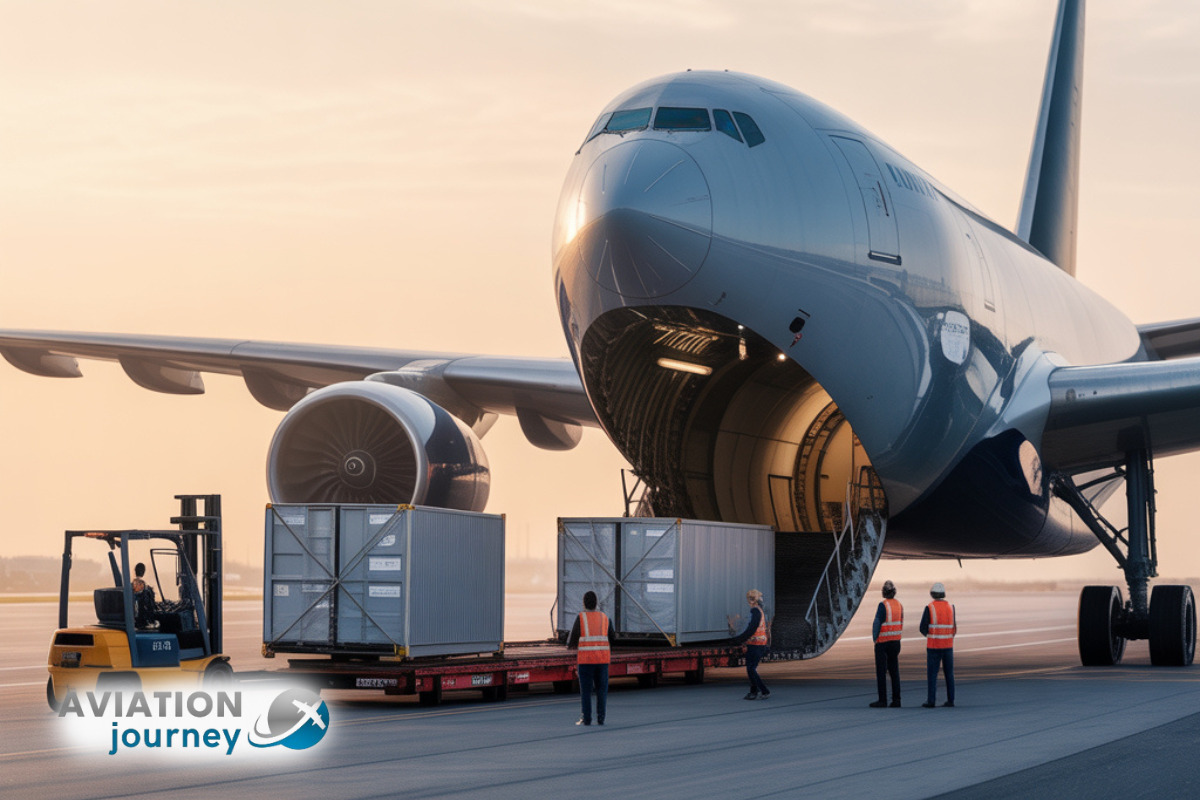Freight Plane: The Powerful Backbone of Global Logistics
In the modern economy of globalization, the freight plane is invaluable to international trade and just-in-time supply chains. Its capacity to move commodities across continents at speed and efficiency makes it a vital commodity. While sea freight continues to enjoy the largest volume, air freight is the leader in speed, reliability, and security. This article critically evaluates the meaning, strengths, weaknesses, and the threats facing the freight plane in the modern supply chains.
Knowing Freight Planes and Logistics
A cargo plane or a freight plane is constructed or converted to carry goods. It neither has windows nor seats but is designed to offer plenty of space for storage. With e-commerce worldwide and just-in-time manufacturing ideas gaining popularity, these planes are more practical than ever. Companies actually rely on them to make on-time deliveries, particularly in value-added and emergency shipments. Additionally, the process of obtaining freight forwarder certification is simplified, thanks to certification bodies offering online certification courses.
Freight Aircraft Utilized in the Industry
Freight aircraft range in size, cargo carried, and distance. They are normally classified based on logistic requirement and carrier preference.
- Dedicated Freighters: The converted or custom-built aircraft used only for carrying cargo with no room for passengers.
- Combi Aircraft: They transport both passengers and cargo but keep them segregated within a single fuselage.
- Quick Change Planes: Designed to be converted from passenger to freight operations within hours for versatile operations.
- Aircraft of Integrators: Used by companies such as FedEx or UPS, for door-to-door transportation with combined logistics.
All three enable specialty service of the air freight environment based on time, cost, and capacity requirements.
Benefits of Freight Plane Usage in Hauling Cargo
- Reduced delivery times minimize supply chain delays and optimize customer satisfaction levels across global markets.
- Freighter planes possess better tracking technology, with real-time monitoring from the loading bay to the receiving point.
- They boast added security features, reducing the risks of theft, loss, or damage during transit.
- Temperature-controlled cabins and special compartments are enjoyed by perishable goods, medicines, and electronics.
- Flexible global routing makes it easy to reach remote areas that would be otherwise difficult for ground or sea transport.
Weaknesses and Limitations of Freight Plane Logistics
- Freight airplane carrying involves substantial capital investment that, in most cases, suggests costly freight rates.
- Growing environmental consciousness of carbon emissions is increasingly interested in cleaner modes of transportation.
- Airports and airstrips must have sophisticated infrastructures to facilitate loading and unloading as well as maintenance of heavy air transport.
- Not effective for bulk cargo handling because of weight capacity and space constraints compared to container ships.
- Fuel price instability impacts air freight costs directly, resulting in volatile pricing for customers and carriers.
Freight Plane Capability Improved by Technologies
- Technologies have turned freight planes into intelligent, efficient, and eco-friendly delivery vehicles.
- Using lightweight materials, aircraft were made lighter while increasing fuel efficiency.
- Artificial intelligence optimizes routes, weather, and fuel consumption to enhance more efficient operating planning.
- Heavy-duty cargo loading gear saves time by handling with fewer steps, and at less cost, clearing the way for operation and making it safer.
- High-accuracy GPS and RFID technology monitor shipments and minimize delivery mistakes.
- Hybrid-electric and hydrogen-powered test trains will reduce emissions, as elsewhere in the world.
Sustainability and Environmental Impact in Freight Aviation
Air freight generates a high proportion of CO₂ emissions from transport, although it is less than 1% of global trade in volume. Airlines and manufacturers are turning to alternative methods of decreasing their carbon footprint now. Aerodynamic innovation, carbon offsetting schemes, and sustainable aviation fuels (SAF) have a part to play. Barring that, regulating bodies such as ICAO are encouraging more environmentally friendly operations to meet climate targets provided under the Paris Agreement. Thanks to more stringent emission regulations and capital investments in innovations, air freight is evolving to suit global sustainability requirements.
Also see Luxurious Airbus A321 First Class Cabin Experience
Freight Planes in Emergency and Humanitarian Aid Operations
Cargo airplanes have been lifelines in times of emergency like earthquakes, floods, pandemics, and war. Their unparalleled speed and range help with the rapid delivery of medicine, food, and shelter. Cargo airplanes were critical in the delivery of vaccines and medical equipment during the COVID-19 pandemic. Humanitarian agencies use dedicated freight routes to transport relief material into hot spots. Strategic placement of cargo airplanes in times of emergency underscores their critical use outside of commercial aviation.

Future Prospects: Where is Freight Plane Transport Going?
The future of freight planes is a convergence of automation, digitization, and sustainability. Autonomous cargo planes, or drone freighters, are being designed to do short-haul deliveries and disaster relief. Blockchain for logistics enables immutable tracking and open documentation. Industry stakeholders are also examining decentralized cargo hubs as a means to minimize dependency on big city airports. As e-commerce continues to grow, demand for air freight will expand, and this will encourage the development of freight aircraft technology and logistics management.
Conclusion
The freight aircraft is the keystone in the framework of global trade and supply chains. In terms of high environmental cost and price, except for that, its relentless speed, reliability, and adaptability render it indispensable. Technological advancements and green friendliness will keep making air freight cleaner and more efficient. With increasing dependence on fast deliveries, especially high-value and time-sensitive items, freight planes will increasingly become the center of attention in industries. This high-tech industry, the reader will agree, warrants unlimited investment, innovation, and genuine attention.
FAQs
What are the kinds of products that usually transport by freight planes?
Freight aircraft typically carry electronics, pharmaceuticals, perishables, textiles, machinery, and urgency documents or samples.
Why does air freight cost more than other forms of transportation?
Air freight requires higher fuel expenses, special handling, fast service, and the use of sophisticated airport facilities.
How do freight aircraft provide cargo security enroute?
They employ reinforced storage compartments, refrigerated containers, and monitoring systems to safeguard merchandise against damage or theft.
How are freight plane emissions being cut?
Airlines are committing to green fuels, lighter weights, and high-performance engines and looking into electric and hybrid plane technology.
Is air freight consistent in natural disaster or crisis?
Indeed, cargo planes are an important means of acquiring emergency materials in a rush should the harbor or roads be impassable.

